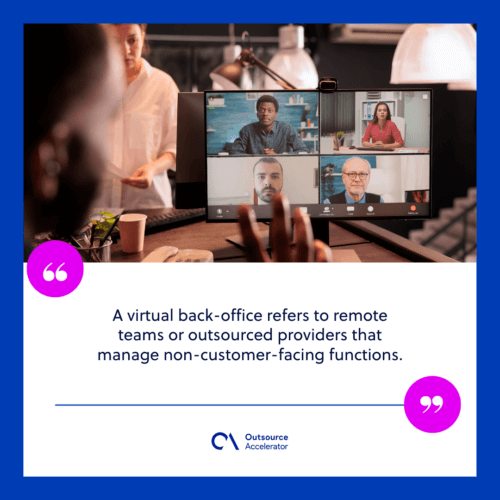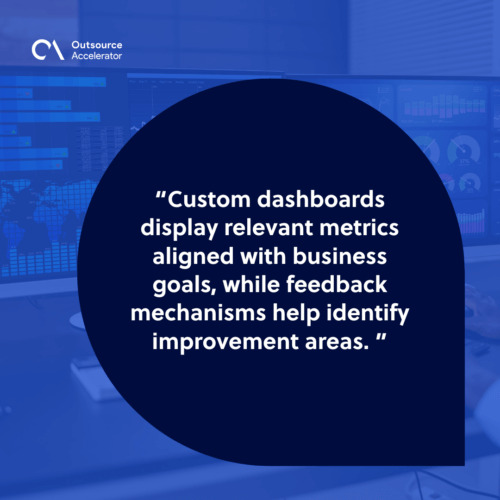5 virtual back-office trends that will transform your operational dynamics

Managing back office operations remotely presents unique challenges for distributed teams.
Delays in communication, inefficient workflows, and outdated systems can slow productivity and impact service quality.
As more businesses rely on virtual teams, the need for streamlined, tech-driven support has never been greater.
Staying current with the latest tools and strategies enables companies to remain competitive while enhancing accuracy, speed, and collaboration across departments. Embracing innovation not only solves day-to-day issues but also drives long-term efficiency and scalability.
This article examines five virtual back-office trends poised to transform how organizations manage their behind-the-scenes operations. These developments provide practical solutions for enhancing operations in remote environments.
Discover which trends are worth adopting to transform your operational dynamics and boost team performance.
Common virtual back office FAQs
Businesses exploring virtual back-office solutions often have questions about how these services work, what to expect, and how they can support growth. Knowing the following basics helps leaders make informed decisions when shifting to remote operational support.
Below are answers to some of the most common questions:
What is a virtual back office?
A virtual back-office refers to remote teams or outsourced providers that manage non-customer-facing functions such as:
- Data entry
- Accounting
- Payroll
- HR administration
- IT support
These services help companies operate efficiently without maintaining large in-house departments.

How secure is a virtual back-office setup?
Working with the right third-party solutions company is always a must. SixEleven is a reputable service provider that:
- Follows strict data protection protocols
- Uses encrypted systems
- Implements role-based access controls
Security depends heavily on a provider’s infrastructure, policies, and employee training practices.
Can virtual back-office teams scale with business growth?
Yes, most virtual teams offer flexible plans that adjust as the company grows. They can expand services, onboard more agents, or adopt new technologies to meet increased demands.
What tools support virtual back-office operations?
Cloud-based platforms, project management software, and automated workflow systems are commonly used. These tools facilitate real-time collaboration, ensure data accuracy, and facilitate task tracking.
Which industries benefit from virtual back-office services?
Virtually any industry can benefit, including finance, healthcare, e-commerce, and professional services. Organizations looking to cut overhead costs while maintaining efficiency often turn to these solutions.
Adopting a virtual back office model can bring speed, flexibility, and focus to daily operations. Having a good understanding of how it works sets the foundation for integrating the right solutions and maximizing value.
5 virtual back office trends to integrate into your team
Adapting to the evolving digital landscape requires businesses to embrace innovative virtual back office strategies. As operations become more remote and data-driven, integrating the right technologies can significantly improve productivity, accuracy, and responsiveness.
Here are five notable virtual back office trends that can transform your team’s performance:
1. AI and automation
Artificial intelligence and automation tools are redefining how back office tasks are handled. Virtual assistants powered by machine learning manage repetitive functions such as data entry, email filtering, and basic customer support.
These tools learn over time, improving efficiency while reducing manual errors.
2. Cloud services
Cloud-based platforms offer flexibility and scalability, making them a valuable asset for virtual teams. Accessing files, applications, and tools from any location supports seamless collaboration.
Robust security features and streamlined data migration tools help maintain operational continuity while protecting sensitive information.
3. Predictive analytics insights
Predictive analytics enables businesses to forecast trends and make data-backed decisions. Analyzing historical data uncovers patterns in customer behavior and market shifts, allowing teams to personalize strategies and stay ahead of industry changes.
These insights help improve decision-making across all departments.
4. Performance tracking tools
Tracking tools offer real-time visibility into employee productivity and process efficiency. Custom dashboards display relevant metrics aligned with business goals, while feedback mechanisms help identify improvement areas.
Integration with training initiatives further supports team development and growth.

5. Automated ticketing system
An automated ticketing system streamlines issue resolution through self-service portals. It categorizes and prioritizes requests, reducing wait times and improving customer support.
This system promotes faster response times and higher user satisfaction, all while reducing administrative burdens.
Leverage these virtual back office trends through SixEleven
SixEleven helps businesses optimize operations, reduce costs, and boost productivity through innovative virtual back office solutions. Its expert teams and advanced tools support seamless integration of today’s most impactful trends.
Partner with SixEleven and discover how smarter support can drive long-term success. Reach out to its team today to get started!







 Independent
Independent




